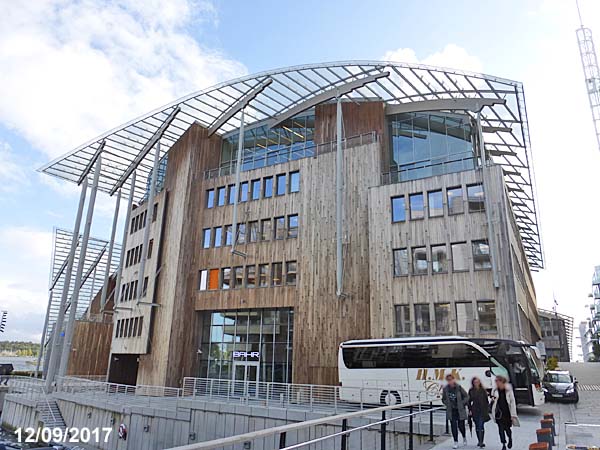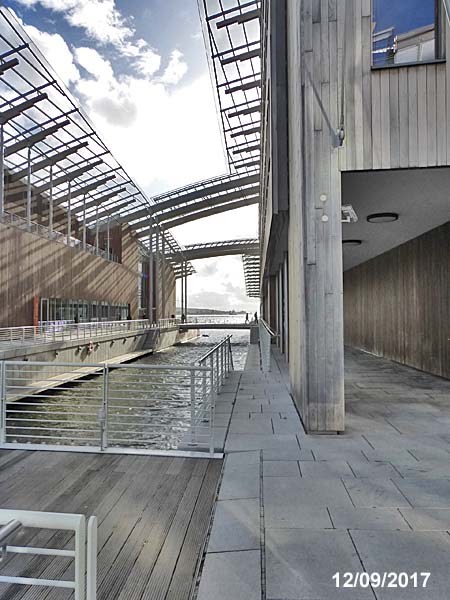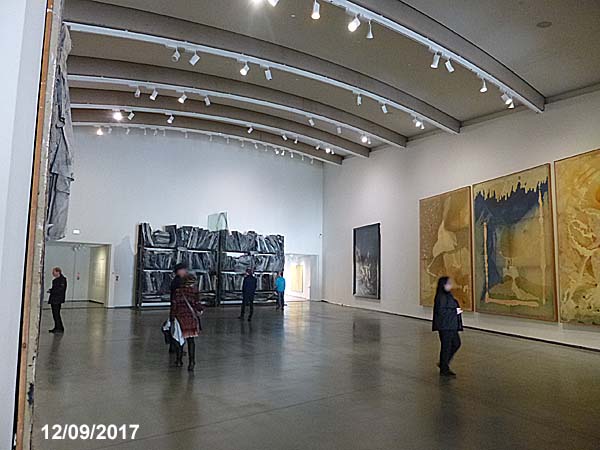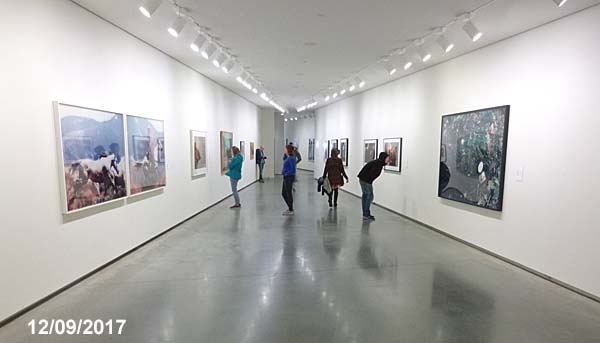| Architect |
Renzo Piano Building
Workshop |
| Date Built |
2006 - 2012 |
| Location |
Tjuvholmen |
| Description |
|
The Astrup-Fearnley Museum of
Modern Art is the centrepiece of the
Tjuvholmen development on the shores of
Oslo Fjord. The development
comprises the museum, ...  .... an office building ....  .... as well as a sculpture park, swimming beach and a waterside promenade.  The RPBW website explains that they were, "... commissioned to build a new home for the permanent collection of the Astrup Fearnley Museum, a separate space for its temporary exhibitions, and an office building with its own exhibition area for a private art collection. Three timber-clad buildings shelter under a single swooping glass roof in a newly landscaped public sculpture garden."  "The Art Museum, on the north side of the canal that cuts through the middle of the site, houses the Astrup Fearnley’s permanent collection of contemporary art. This building connects at ground level underneath the main stair and piazza on Tjuvholmen Allee, into the ground floor of the adjacent office building, where a private art collection is displayed. To the south, over a footbridge across the canal, is the museum’s space for temporary exhibitions. Gallery space is spread over two floors, giving the visitor a diverse range of spaces and volumes to experience, shaped by the curve of the sloping roof and lit via a spectacular skylight. An exterior roof terrace at second floor level provides a generous exhibition space for sculpture."  "One of the most significant elements of this project is the huge glass roof that soars over the complex, linking the buildings together and giving the development a presence on the waterfront. Its curved shape, formed by laminated wood beams, crosses the canal between the buildings. The beams are supported by slender steel columns, reinforced with cable rigging, which refer to the maritime character of the site. .....   .... On Skjaeret, the roof almost touches the ground. A small pond prevents people from climbing on the glass. The glass on the roof has a white ceramic frit, reducing its transparency by 40%."   - Inside the museum -
      |
|
|
Astrup
Fearnley Museum, Oslo, Norway
 Close Window  |